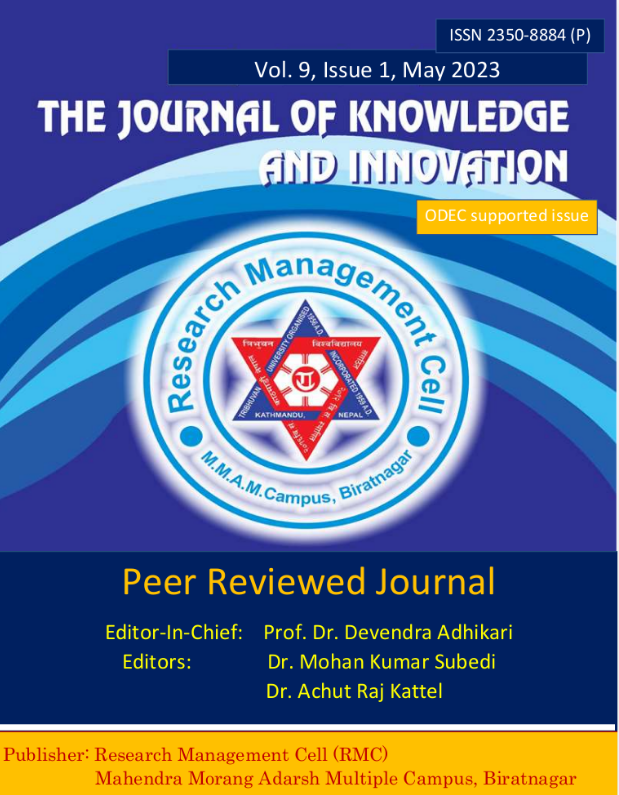Effect of Landlockedness on Receiving Tourism Income in SAARC Countries
DOI:
https://doi.org/10.3126/jki.v9i1.53603Keywords:
Economic-driven tourism growth hypothesis, quantile regression, symmetric, predictorAbstract
This study looks into the economic-driven tourism growth hypothesis in the context of SAARC countries. It also investigates the effect of landlockedness on tourism income receipt. It is based on secondary data gathered from several World Bank Reports and economic surveys of respective countries. It made use of 169 data points from SAARC's eight member countries. The data from an unbalanced panel was used. It makes use of an exploratory and analytical research design. For the impact study of independent variables on dependent variables, descriptive statistics, panel unit root testing, panel quantile regression analysis, quantile process estimates, quantile slope equality test, and symmetric quantile test are used. The GDP has a positive impact on tourism income in SAARC countries. It is found that one percent increase in the median value of GDP, the tourism income is increased by 0.219 percent. The evidence has proved the economic-driven tourism growth hypothesis, particularly regarding SAARC countries. This highlights the need for tailored tourism initiatives aimed specifically at landlocked nations.
Downloads
Downloads
Published
How to Cite
Issue
Section
License
Copyright (c) 2023 Research Management Cell (RMC), Mahendra Morang Adarsh Multiple Campus

This work is licensed under a Creative Commons Attribution-ShareAlike 4.0 International License.
This license enables reusers to distribute, remix, adapt, and build upon the material in any medium or format for noncommercial purposes only, and only so long as attribution is given to the creator.




